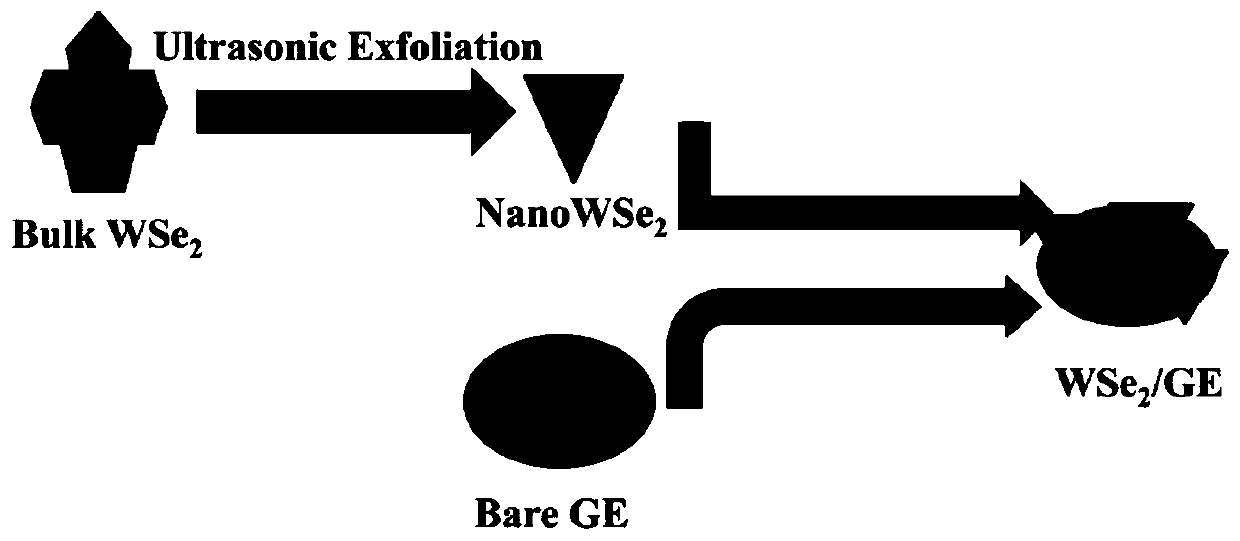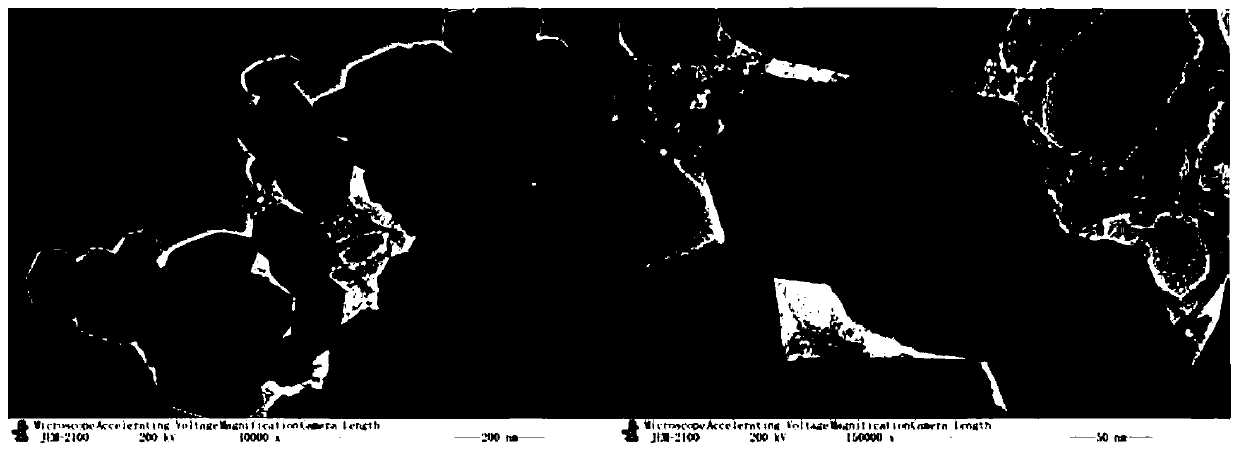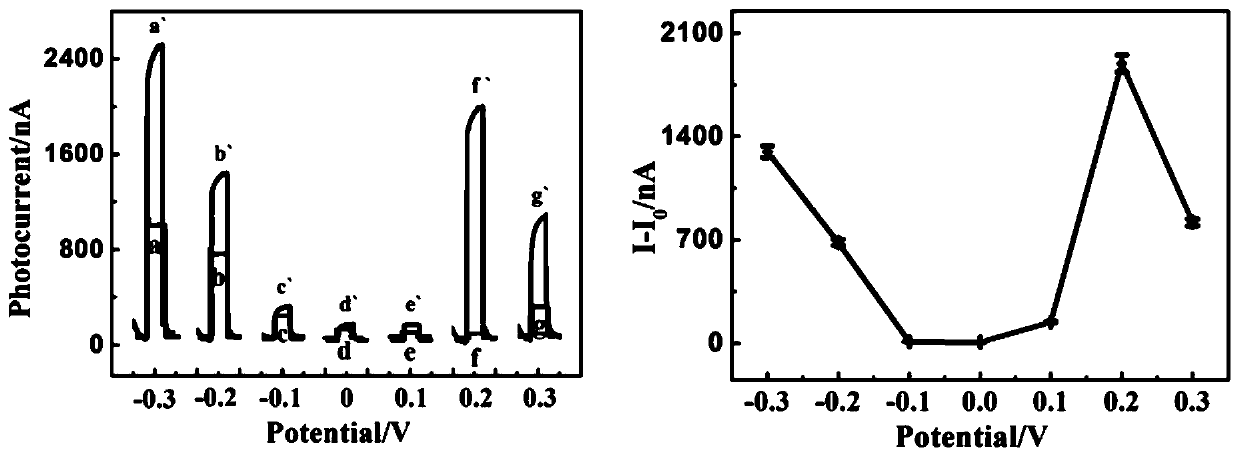Method for detecting dopamine by using nanometer tungsten diselenide modified gold electrode photoinduced electrochemical sensor
A photoelectrochemical and tungsten diselenide technology, which is applied in the direction of material electrochemical variables, scientific instruments, instruments, etc., can solve the problems of high cost and complicated operation, and achieve high selectivity, excellent mechanical properties, and large specific surface area. Effect
- Summary
- Abstract
- Description
- Claims
- Application Information
AI Technical Summary
Problems solved by technology
Method used
Image
Examples
Embodiment 1
[0020] Embodiment 1 potential optimization
[0021] The prepared photochemical sensor may change its own electron transfer system due to the difference in electrode potential, which will have a certain impact on the measurement of photoelectrochemical signals. The photoelectrochemical signals were measured at different working potentials of -0.3V, -0.2V, -0.1V, 0.0V, 0.1V, 0.2V, and 0.3V, respectively. image 3 Response to photoelectrochemical signals at different potentials. The figure on the left shows that when the potential is 0.2V, I and I 0 The ratio is the largest, and the figure on the right shows that 0.2V is I and I 0 The difference is the largest, and the photoelectrochemical signal response is the strongest and stable at the potential of 0.2V, so the final electrode potential is 0.2V.
Embodiment 2
[0022] Example 2 pH optimization
[0023] The electrodes were respectively measured in the buffer solution with pH of 6.5, 7.0, 7.5, 8.0, 8.5 and 9.0 to measure the photoelectrochemical signal. Figure 4 is the photoelectrochemical signal response measured under different pH conditions. It can be seen that the photoelectrochemical signal value reaches the maximum when the pH is 7.5. Therefore, the pH of the detection medium was chosen to be 7.5.
Embodiment 3 2
[0024] The optimization of embodiment 3 tungsten diselenide dosage
[0025] Use a pipette gun to accurately pipette 5 μL, 10 μL, 15 μL, 20 μL, 25 μL, and 30 μL of tungsten diselenide solution and drop-coat it on the gold electrode to measure the photoelectrochemical signal. Figure 5 is the photoelectrochemical signal under different dosages of tungsten diselenide. It can be seen that the photoelectric signal gradually increases when the dosage of tungsten diselenide is 5 μL to 20 μL, and the signal value reaches the maximum when the dosage is 20 μL, but at the same time the blank signal value is also increasing, as can be seen from the right figure, When the dosage of tungsten diselenide is 15 μL and 20 μL respectively, the obtained analytical signal values are the same, so 15 μL is selected as the optimal dosage of tungsten diselenide.
PUM
 Login to View More
Login to View More Abstract
Description
Claims
Application Information
 Login to View More
Login to View More - R&D
- Intellectual Property
- Life Sciences
- Materials
- Tech Scout
- Unparalleled Data Quality
- Higher Quality Content
- 60% Fewer Hallucinations
Browse by: Latest US Patents, China's latest patents, Technical Efficacy Thesaurus, Application Domain, Technology Topic, Popular Technical Reports.
© 2025 PatSnap. All rights reserved.Legal|Privacy policy|Modern Slavery Act Transparency Statement|Sitemap|About US| Contact US: help@patsnap.com



